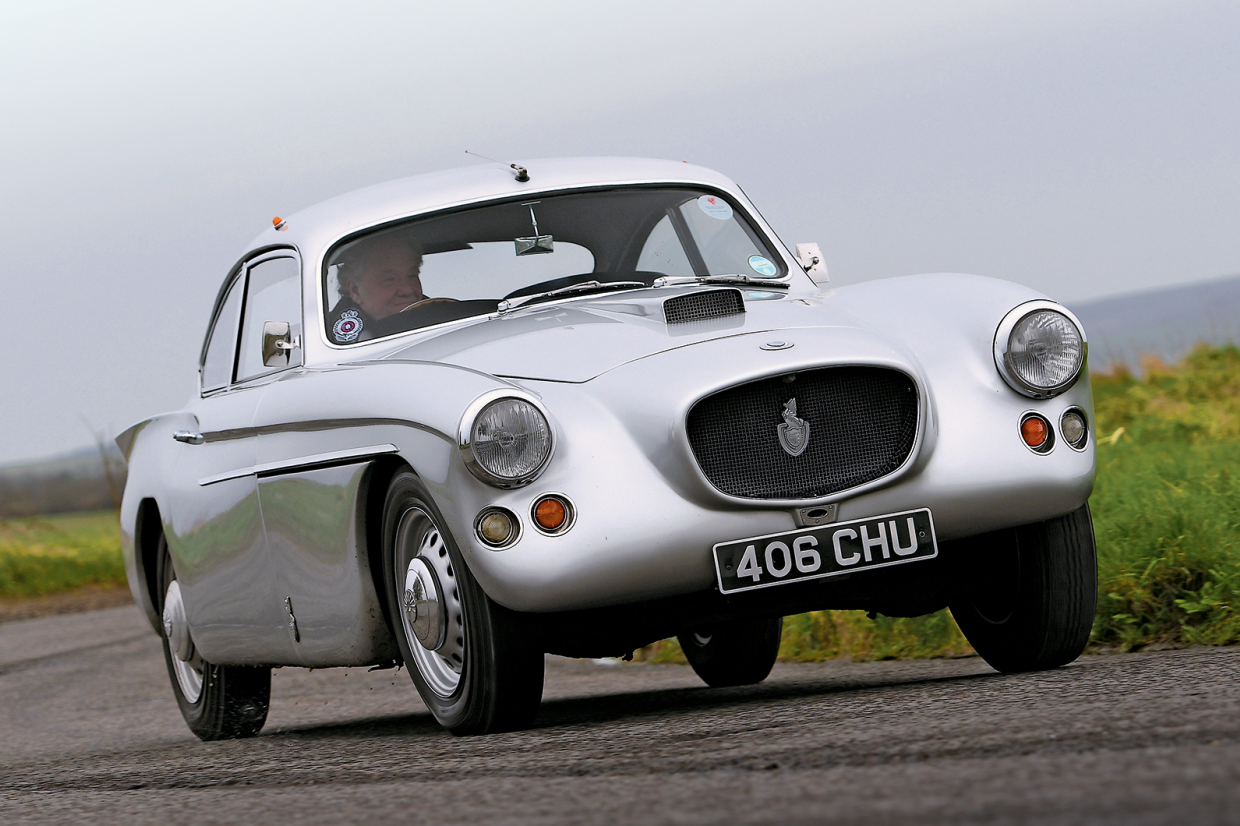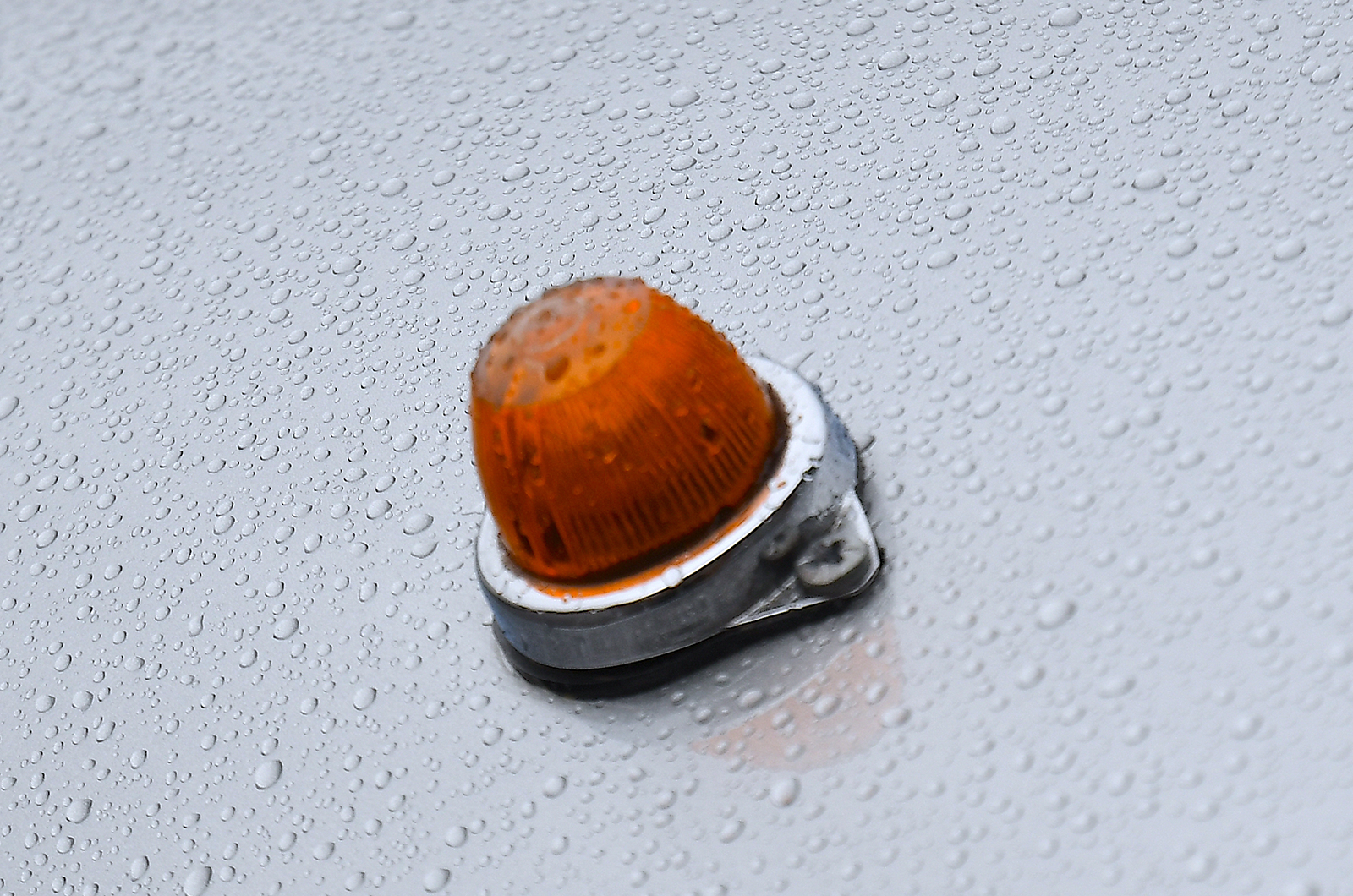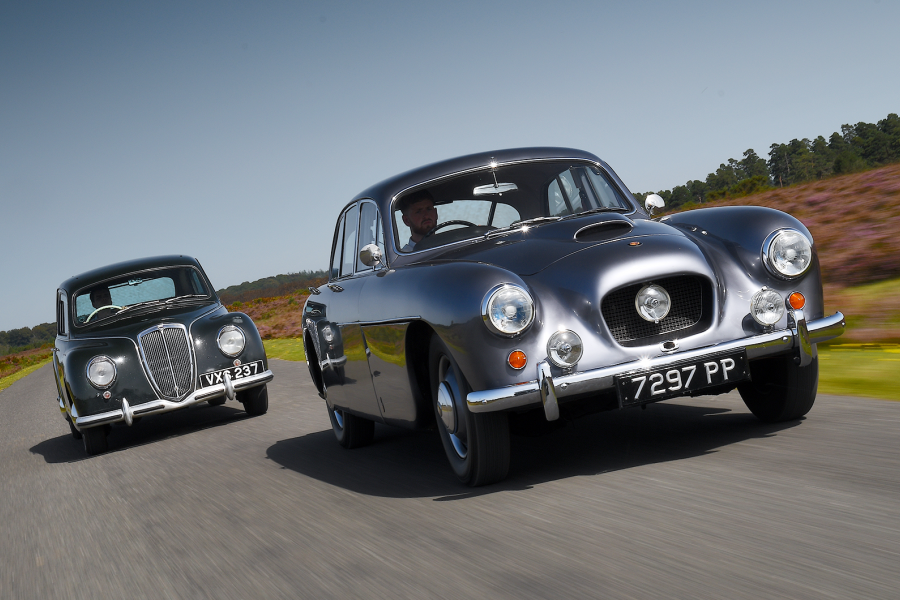More recently, it has had its fuel and braking systems rebuilt, new tyres and exhaust fitted, and various missing chrome parts recreated, but not the quarter-bumpers visible in the (few) surviving period pictures.
Inside, it is light and bright, with a traditional Bristol instrument nacelle and a comfortable driving position that suggests attention has been paid to how legs articulate rather than treating you as an inconvenient afterthought.
The front seats recline and have additional pop-up shoulder supports in the tops of the backrests: an airliner-type refinement shared with the 406 saloon, but not found on the V8s.
The Bristol 406S is agile and neutral, with light steering
To start it, you first turn the key then push a button.
With its trademark angled valve covers and handsome manifolding, the responsive, throaty ‘six’ sits tall and narrow between the chassis rails, its ball-jointed rigid throttle linkage allowing millimetric control.
Bristol experimented with SU carburettors, but triple Solexes gave a better response.
You can blip accurately coming down the ’box and feed in just the required amount of power, then allow the revs to wind out crisply: 5000rpm gives 60mph in second and nearly 90mph in third.
Stock dials in the classic Bristol’s busy dashboard
It is vocal when roused, but makes all the right thoroughbred noises: a sonorous blend of busy-sounding valvegear and lusty induction roar.
Being a standard 406 engine, this 2.2-litre is equally content to burble along at 2500rpm in direct top, dipping in and out of overdrive as conditions and mood dictate.
The ride is firm, but the car feels of-a-piece in a way that is rare with body-on-frame vehicles, so bumps don’t cause rattles.
The impression is of refinement.
Adjustable chairs make it easy to get comfy in the Bristol 406S
Both the steering and gearchange are sensual delights.
The former is light and nicely geared, at three turns between tight locks, and it has none of the low-speed heft and straight-ahead slop that characterises most big ’50s cars.
Via a handy shifter, the gears slice through quickly, quietly and precisely between well-chosen ratios to keep the engine on the boil.
It handles tidily, neutrally and accurately, encouraging spirited progress and rewarding well-coordinated inputs from your hands and feet.
The 406S never feels fazed or unsettled by any kind of corner or surface.
Livelier than a standard 406, lovelier (to my eyes) than the 404, this must surely be the ultimate roadgoing six-cylinder Bristol, with the possible exception of the short-chassis 406 Zagato.
Images: John Bradshaw
Thanks to: SLJ Hackett
Factfile
Bristol 406S
- Sold/number built 1958-’61/171 (all 406s)
- Construction aluminium body over tubular steel frame, steel box-section chassis
- Engine iron-block, alloy-head, ohv 2216cc straight-six, triple Solex carburettors
- Max power 130bhp @ 5750rpm
- Max torque 132lb ft @ 3000rpm
- Transmission four-speed manual, RWD
- Suspension: front independent, by wishbones, transverse leaf spring rear live axle, longitudinal torsion bars, transverse links; telescopic dampers f/r
- Steering rack and pinion
- Brakes discs
- Length 14ft ¾in (4286mm)
- Width 5ft 8in (1727mm)
- Height 4ft 7in (1397mm)
- Wheelbase 9ft (2743mm)
- Weight 2296lb (1041kg)
- Mpg 26-30
- 0-60mph n/a
- Top speed 125mph (est)
- Price new £4244 (standard 406)
- Price now £295,000*
*Price correct at date of original publication
Enjoy more of the world’s best classic car content every month when you subscribe to C&SC – get our latest deals here
READ MORE
Alfa Romeo 2000 Sprint vs Bristol 406: the connoisseur’s choice
Alvis TE21 family: saloon, drophead and stylish Graber
Bristol 450 Le Mans: racer reborn
Martin Buckley
Senior Contributor, Classic & Sports Car























